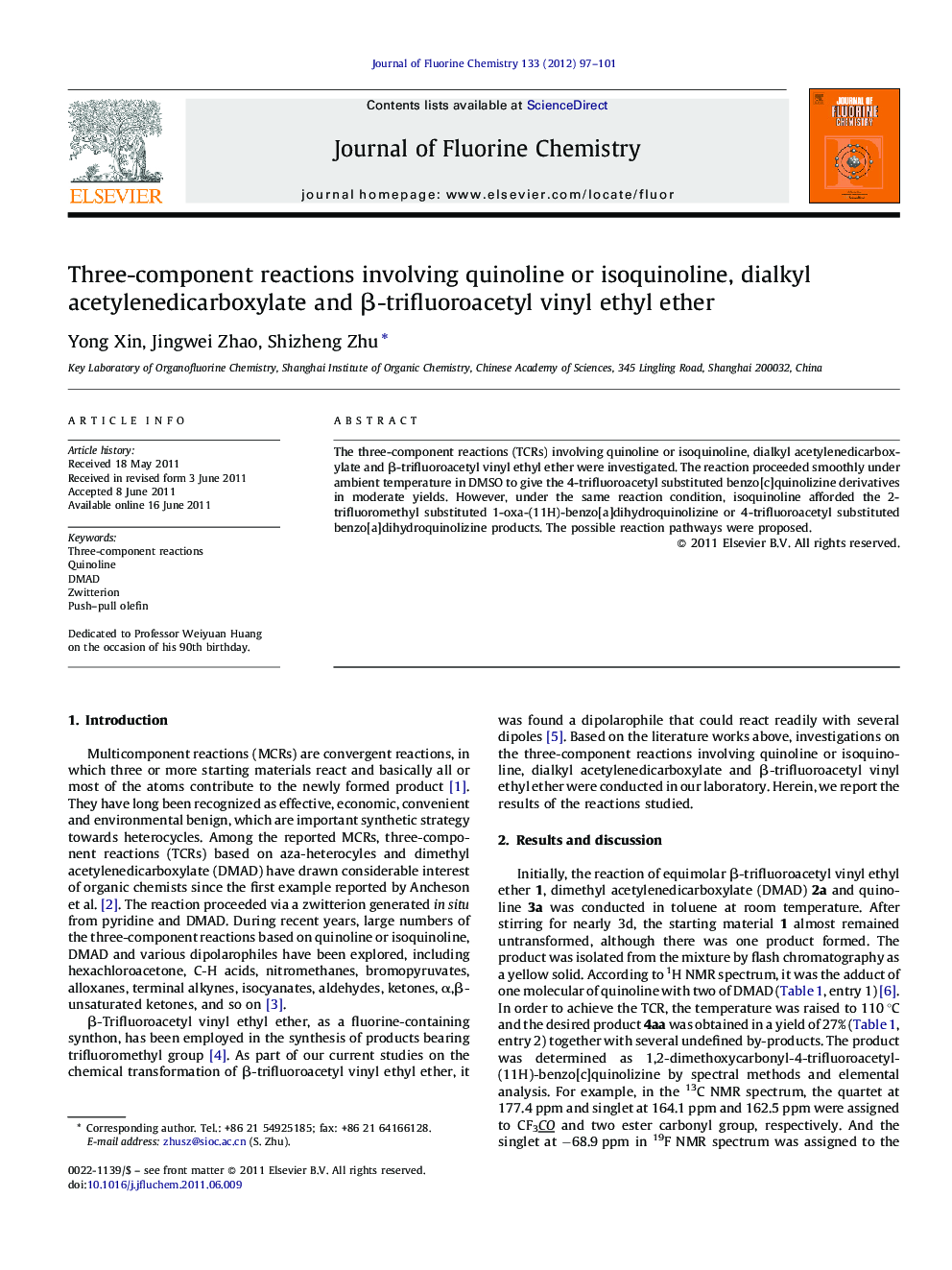| Article ID | Journal | Published Year | Pages | File Type |
|---|---|---|---|---|
| 1314320 | Journal of Fluorine Chemistry | 2012 | 5 Pages |
The three-component reactions (TCRs) involving quinoline or isoquinoline, dialkyl acetylenedicarboxylate and β-trifluoroacetyl vinyl ethyl ether were investigated. The reaction proceeded smoothly under ambient temperature in DMSO to give the 4-trifluoroacetyl substituted benzo[c]quinolizine derivatives in moderate yields. However, under the same reaction condition, isoquinoline afforded the 2-trifluoromethyl substituted 1-oxa-(11H)-benzo[a]dihydroquinolizine or 4-trifluoroacetyl substituted benzo[a]dihydroquinolizine products. The possible reaction pathways were proposed.
Graphical abstractThe three-component reactions (TCRs) involving quinoline or isoquinoline, dialkyl acetylenedicarboxylate and β-trifluoroacetyl vinyl ethyl ether were investigated. The reaction proceeded smoothly under ambient temperature in DMSO to give the 4-trifluoroacetyl substituted benzo[c]quinolizine derivatives in moderate yields. However, under the same reaction condition, isoquinoline afforded the 2-trifluoromethyl substituted 1-oxa-(11H)-benzo[a]dihydroquinolizine or 4-trifluoroacetyl substituted benzo[a]dihydroquinolizine products. The possible reaction pathways were proposed.Figure optionsDownload full-size imageDownload as PowerPoint slideHighlights► A three-component reaction was investigated. ► The reaction proceeded smoothly under ambient temperature in DMSO. ► Quinolines afforded the CF3CO-substituted benzoquinolizines. ► But isoquinolines and DMAD gave the CF3-substituted 1-oxa-benzodihydroquinolizines. ► The possible reaction pathways were proposed.
